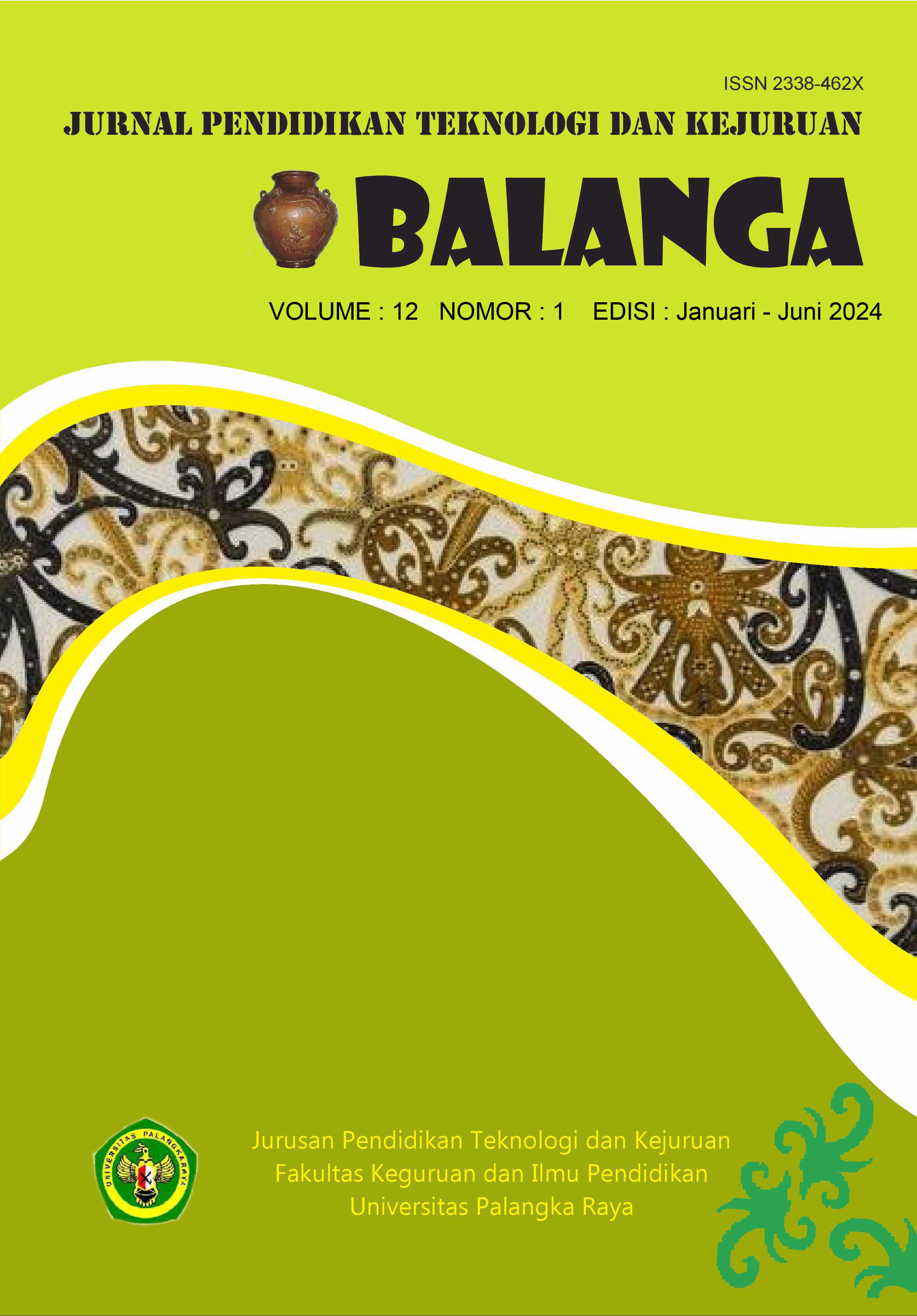VARIATION OF TANGKILING AGGREGATE SIZE AND ITS IMPACT ON COMPRESSIVE STRENGTH AND ELASTICITY MODULUS OF CONCRETE
DOI:
https://doi.org/10.37304/balanga.v12i1.14617Keywords:
Compressive Strength, Elastic Modulus, Coarse Aggregate Size VariationsAbstract
The use of coarse aggregate significantly influences the mechanical properties and overall quality of concrete. This study investigates the impact of different coarse aggregate sizes (10 mm, 20 mm, and 40 mm) on the compressive strength and elastic modulus of concrete at 28 days. The research was conducted as part of a thesis in the Building Engineering Education Program, Department of Vocational Technology Education, Faculty of Teacher Training and Education, Universitas Palangka Raya. The primary objective was to determine the compressive strength and elastic modulus values for concrete mixes using varying coarse aggregate sizes. The concrete mixtures incorporated different coarse aggregate sizes along with fine aggregate, water, and Portland Pozzolana Cement (PPC) type I from Gresik. The mix design followed the guidelines outlined in SNI 03-2843-2000 for normal concrete mixtures. Testing was performed on cylindrical specimens measuring 15 cm x 30 cm. Each aggregate size variation (10 mm, 20 mm, and 40 mm) was tested using 10 samples, and the tests were conducted at 28 days in the Laboratory of Building Engineering Education, Faculty of Teacher Training and Education, Universitas Palangka Raya. The average compressive strength at 28 days for the coarse aggregate variations of 10 mm, 20 mm, and 40 mm were 29.15 MPa, 28.60 MPa, and 28.50 MPa, respectively. The average elastic modulus at 28 days for the same variations were 3033 MPa, 3856 MPa, and 3950 MPa.
Downloads
Downloads
Published
Issue
Section
License
Copyright (c) 2024 BALANGA: Jurnal Pendidikan Teknologi dan Kejuruan

This work is licensed under a Creative Commons Attribution 4.0 International License.






























